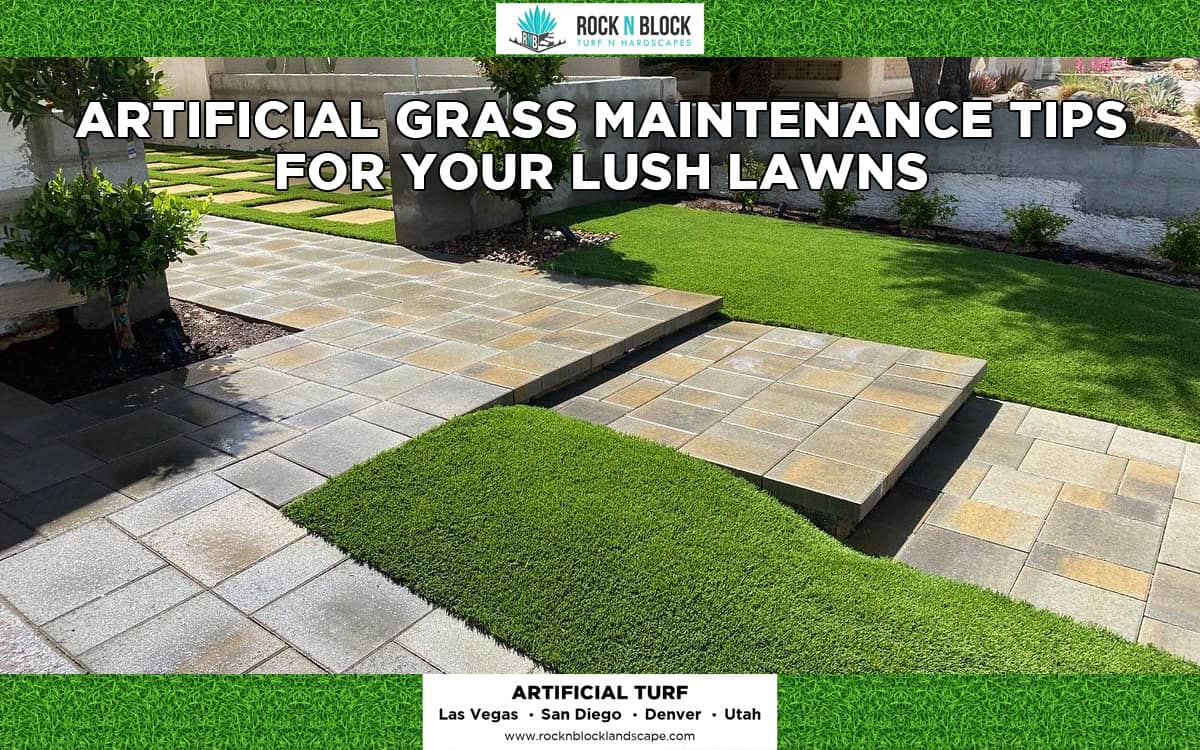If you’re a Las Vegas homeowner or an eco-friendly enthusiast, you’re probably looking for ways to enjoy your artificial grass lawn without the hassle of constant maintenance. Artificial grass is the answer, promising lush green lawns with minimal work. In this post, we’ll go over the benefits of artificial grass, provide maintenance tips, and share case studies to help you decide if this is for your home.
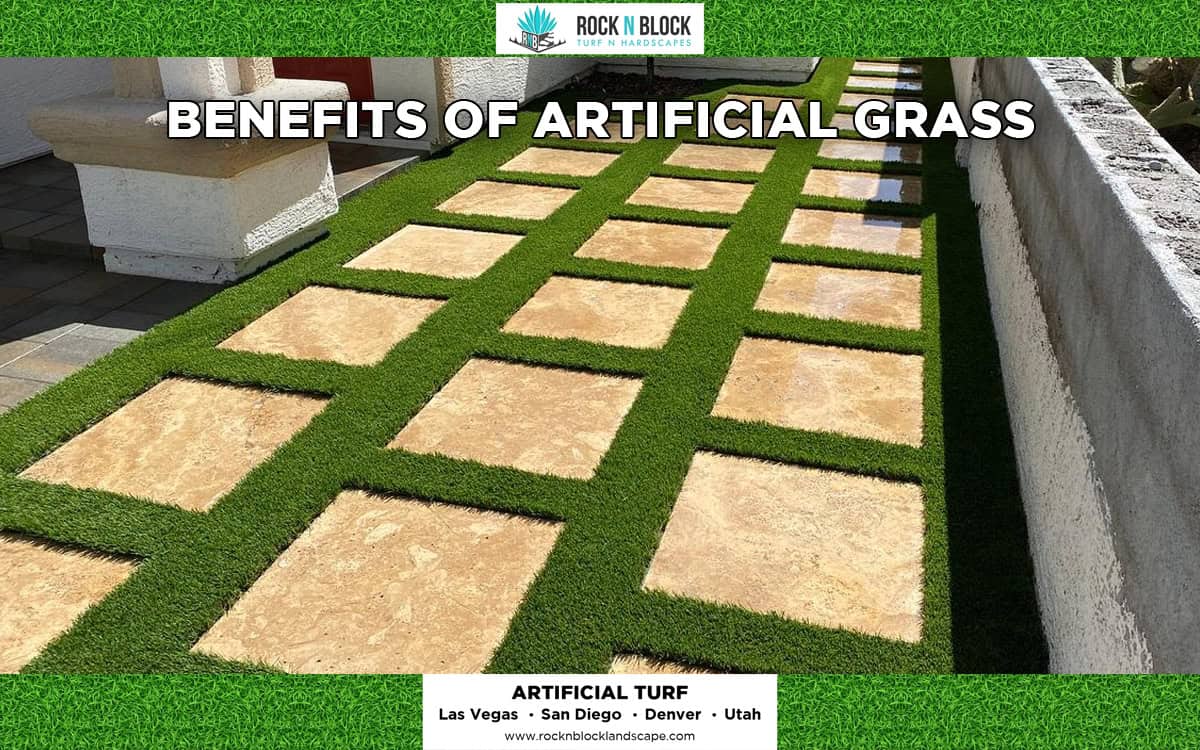
Benefits of Artificial Grass
Artificial grass, also known as synthetic turf, is the go to choice for homeowners who want a perfect lawn without the hassle. One of the biggest benefits is low maintenance. Unlike real grass that requires regular watering, mowing, and fertilizing, artificial grass looks great with minimal work.
Beyond convenience, artificial grass is eco-friendly. It eliminates the need for excess water usage, perfect for water-scarce areas like Las Vegas. By reducing water demand, you’re helping the environment while having year-round greenery.
For eco-friendly homeowners, artificial grass is a sustainable landscaping option. Its durability and long life mean less replacements and less waste. Many manufacturers now make artificial grass with recycled materials, making it even more eco-friendly.
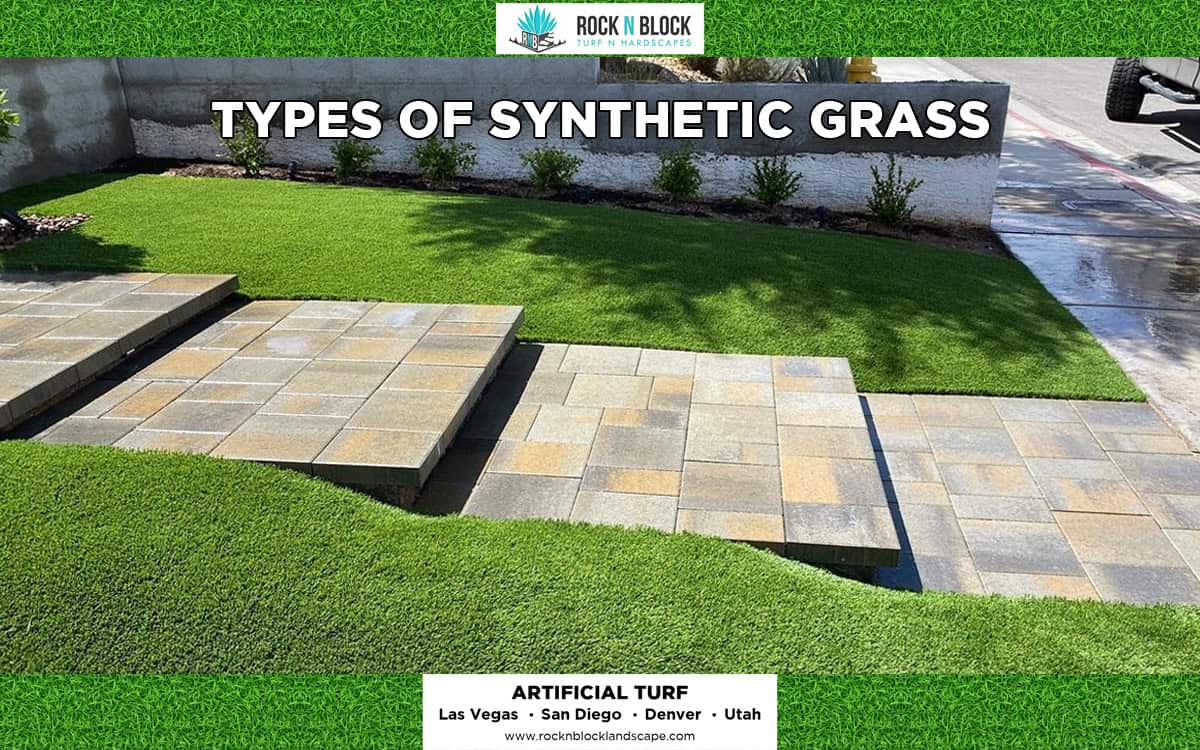
Types of Synthetic Grass
When considering artificial grass you need to know the different types to choose from. Synthetic turf with its tough design is perfect for high traffic areas. It’s used in sports fields but equally good for residential yards where durability is key.
If you want a more natural look there are several options that mimic the look of real grass. These artificial lawns come in varying blade lengths, textures and shades to replicate the look of a natural landscape. They blend in with your yard’s aesthetic and is a realistic and visually pleasing alternative.
Choosing the right type of artificial grass depends on your needs. Consider your climate, level of foot traffic in your yard and your desired look. Consult with professionals to help you make a decision that’s right for you.
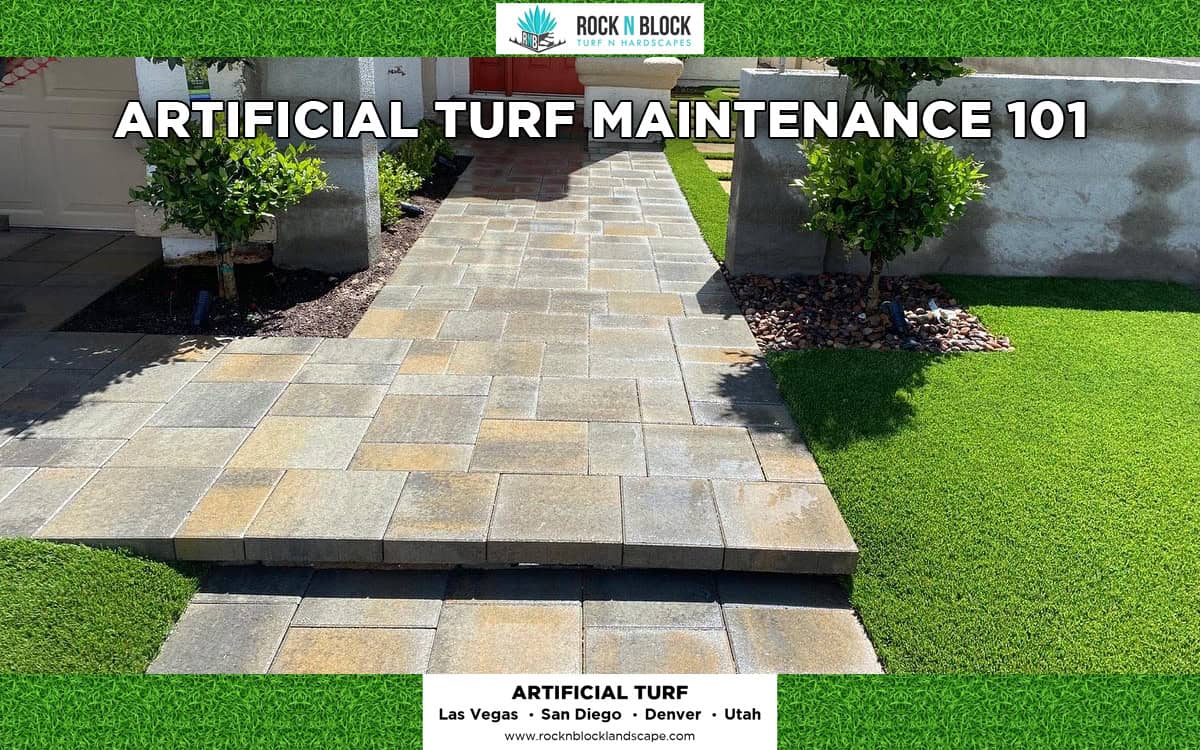
Artificial Turf Maintenance 101
Maintaining artificial grass requires much less work than natural grass. Regular cleaning is key to keeping your artificial turf looking its best. Regularly rinsing synthetic grass with a garden hose can help remove dirt, dust, and pet-related odors. Start by removing debris like leaves and twigs with a leaf blower or garden rake. This simple step prevents organic matter from building up and keeps the grass looking great.
To ensure longevity you need to address stains or spills as soon as possible. Use a mild detergent with water and a soft brush to gently scrub away stains. For pet owners rinse the area with water and a pet friendly cleaner to keep it clean and odor free. If chewing gum gets stuck in the turf, freeze it with dry ice or aerosol refrigerants before gently scraping it off.
Damage prevention is another aspect of artificial grass maintenance. Don’t place sharp objects or heavy furniture directly on the turf to prevent tears or flattening. If you notice minor damage like loose seams or small holes address them as soon as possible to prevent further deterioration.
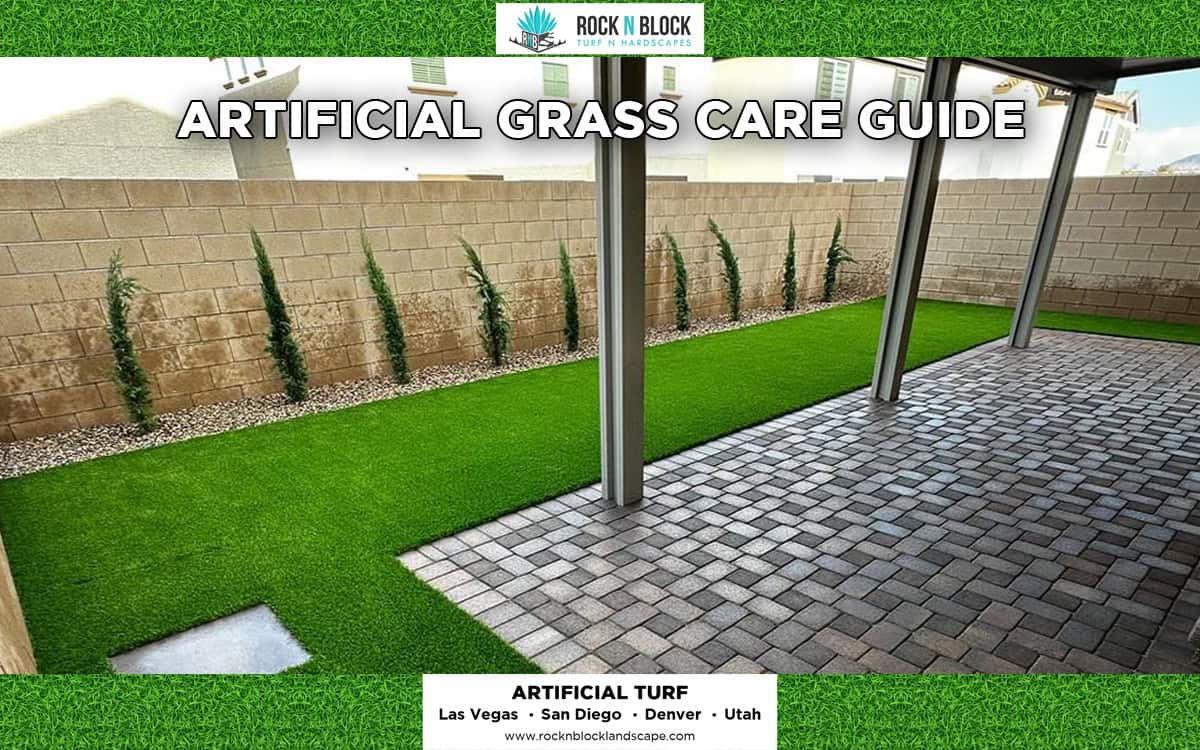
Artificial Grass Care Guide
To keep your artificial grass in top shape regular grooming is recommended. Monthly artificial turf maintenance is essential to keep synthetic grass looking crisp and inviting. Brush the grass with a stiff broom or a specialized brush to keep the blades upright and the lawn looking great. This will also prevent matting especially in high traffic areas.
If you have odor issues consider using an artificial grass deodoriser. These products will neutralize odors and keep your lawn smelling fresh. They’re perfect for pet owners or areas with poor air circulation. Promptly picking up pet waste and rinsing the area can prevent odors and stains.
Addressing minor damage as soon as possible will extend the life of your artificial grass. If you notice issues with seams or infill displacement consult a professional to fix. Regular cleaning is particularly important in areas with low rainfall to manage solid waste effectively. Regular inspections and maintenance will keep your synthetic lawn a beautiful and functional part of your home. Regular monitoring and the use of pre-emergent weed control can help prevent weed growth, especially around the edges where organic debris tends to accumulate.
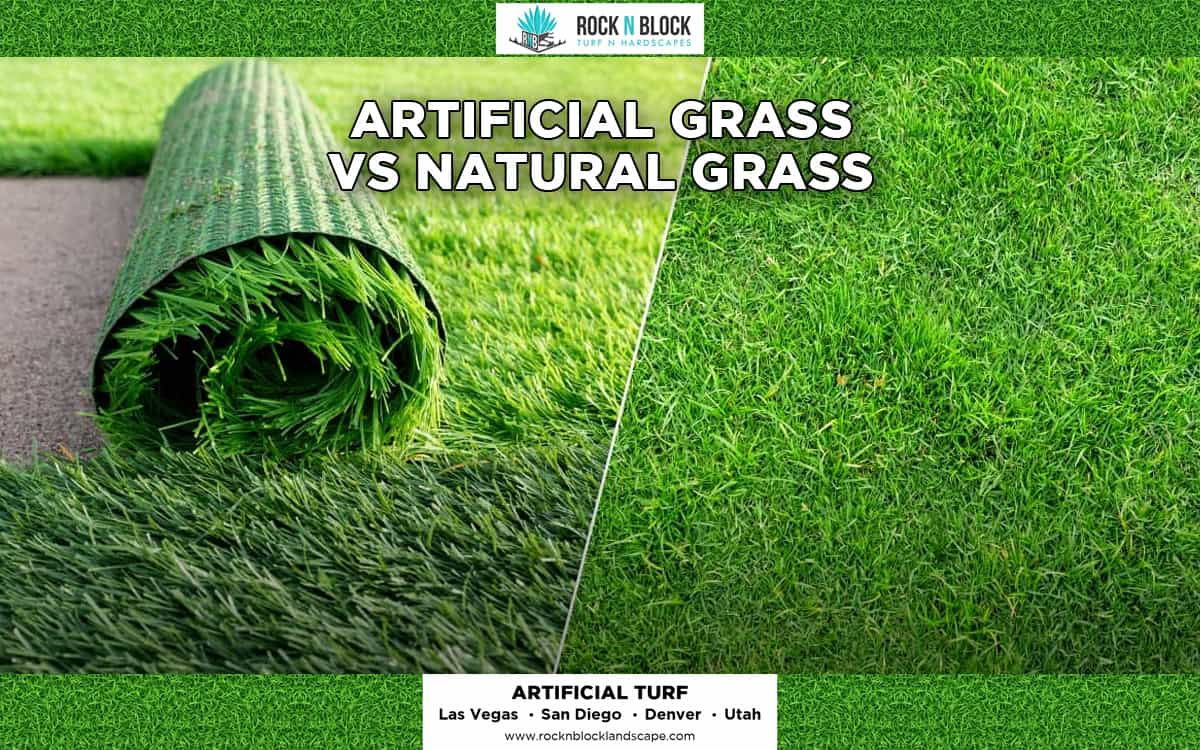
Artificial Grass vs Natural Grass
When comparing the pros and cons of artificial grass and natural grass several factors come into play. In maintenance artificial grass is the winner. It is much easier to maintain artificial grass compared to natural grass, saving you time and effort. Natural grass needs continuous care mowing, watering, fertilizing and pest control. Synthetic grass needs minimal effort saving you time and money.
Cost is another consideration. While the initial cost of artificial grass may be higher the long term savings are significant. No watering, mowing or buying fertilizers means your monthly expenses will decrease. Artificial grass also has a longer life span 15 to 20 years making it a cost effective option in the long run.
From an environmental perspective artificial grass has many benefits. It reduces water consumption, minimizes the use of harmful pesticides and fertilizers and lowers carbon emissions from lawn maintenance equipment. For homeowners who are committed to living sustainably artificial grass is the responsible choice.
Conclusion
Artificial grass is a great solution for homeowners who want a beautiful low maintenance and eco friendly lawn. By understanding the benefits, trying out different types and mastering the maintenance techniques you can have a lush and inviting outdoor space all year round. If you’re ready to make the switch consider contacting professional maintenance services or buying high quality artificial grass to upgrade your home’s landscape. Whether you want to reduce water usage, save time on yard work or just have a picture perfect lawn artificial grass is the way to go.
Artificial Grass Maintenance Frequently Asked Questions
How does artificial grass maintenance differ from real grass?
How often should I clean my artificial lawn?
How do I remove pet waste from artificial grass?
Removing pet waste is simple. First, remove pet waste by picking up solids as you normally would. Then, rinse the area with water to help dilute any pet urine. For stubborn smells, a mix of water and mild soap can do the trick. You’ll love how easy it is to keep the artificial lawn clean and hygienic for your pets.
What’s the best way to deal with stains on synthetic turf?
Most stains on synthetic turf can be cleaned with mild soap and water. For stubborn stains like motor oil, you might need to scrub the area gently, but avoid using harsh chemicals as they can damage the turf fibers. Regular cleaning can help avoid stains before they become an issue, so a little bit of routine maintenance goes a long way.

